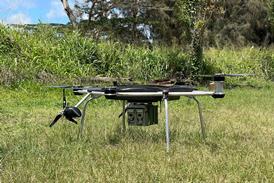Remember the distant country that was July and August 2008? Oil prices and exchange rates were behemoths on an aerospace rampage. Coping with them was driving airlines and European manufacturers to the edge of despair and forcing drastic action.
Since then, the financial landscape has been rearranged by the credit crisis earthquake and not so much is heard about oil prices and exchange rates. Airlines now have a much bigger problem, in that plummeting demand for their over-supplied services has them reeling, even with oil priced at $40 a barrel or so.
But while aerospace markets are showing signs of weakness, manufacturers do not feel the same threat. Executives expect defence spending to stay high and see the record order backlogs at Airbus and Boeing as keeping their civil businesses more or less on track.
For manufacturers, the fall of oil prices - and the general easing of commodity prices - means lower costs. Against that background, watch for four key themes.
First is acquisitions designed to fill capability gaps. See, for example, Dassault's purchase of a one-fifth stake in and effective control, alongside the French government, of Thales. This move stems from Dassault's need to offer a more comprehensive electronics package, particularly in radar, around its Rafale fighter. The seller, Alcatel-Lucent, gets the cash and increases focus on its core telecoms business - winners all around.
MANAGEMENT BURDENS
Second, consider conglomerates. No business unit can afford to subsidise struggling siblings. For conglomerates with little or no meaningful synergy, this downturn may cast a harsh light on the reality that, in many cases, central management brings little but overhead costs to units that may be better off independent.
Deathbed-ridden insurance giant AIG is the obvious example. Its travails do nothing but damage to its International Lease Finance unit, which looks like being sold back to investors led by its founder and chief, Steven Udvar-Hazy, by the end of the first quarter.
Components makers such as GKN and Senior represent another group, of diversified manufacturers, whose aerospace businesses are doing well while other divisions ship water. GKN, for example, is being hammered as automotive markets collapse. The aerospace division - well-placed with Airbus and other key customers - is arguably a standalone business and could make an attractive spin-off if funds were needed to support the much larger automotive operation.
Third is restructuring. Last year began with a long dollar slide accelerating towards €1 = $1.50-plus and making life intolerable for European companies, led by Airbus, with costs in the eurozone and products priced in dollars. A summer-autumn dollar rally took the urgency out of restructuring plans based on shifting some production to North America. By late December the depth of US economic woes and interest rate slashing had pulled the rug out from under the greenback again, but with the eurozone fragile only a gambler would forecast exchange rates.
Nevertheless, diversifying out of the eurozone is a sound strategy, to cut costs and hedge against exchange rate volatility. Europeans will be looking for acquisitions or joint ventures in North America, although big deals are unlikely unless finance markets loosen.
Fourth is the tricky issue of outsourcing. It makes good business sense to employ only the talent needed at any given time, but Boeing's unhappy 787 experience illustrates the hole in that logic. Experienced engineering talent capable of doing the detail work cannot be hired at will - it must be nurtured. Hence Boeing is bringing some work back in-house.
 |
|---|
© EADS/Northrop Grumman |
One way round the problem is the one-project partnership. The EADS-Northrop Grumman pairing that won the US Air Force KC-X tanker contract last year may not beat Boeing again when the tender is revisited, but the link represents the future of major development projects. After the A350 and 787, neither Airbus nor Boeing will be the sole "owner" of another new model.
WILD TIMES AHEAD
Watch out for some wild times in the second half of the year when one glaring defect of the "solid order backlog" rationale for relative aerospace industry confidence is revealed - how can the Airbus-Boeing order backlog save everybody when the companies placing those orders are facing financial catastrophe?
This year will see a tidal wave of airline industry consolidation, including failures, mergers, acquisitions and shrinkage. Airlines will, rationally, look to defer as many aircraft orders as possible and even relatively healthy ones will cancel if need be, even if that means paying a penalty. That is because, when business recovers, those left standing might reasonably expect to find bargains galore on nearly new and good used aircraft, along with production slots. Why buy now when you can cheat death and hold off for a bargain?
Most intriguing are the Middle East carriers, whose business models assume their region is the crossroads of the world, the hub of hubs served by hundreds of the newest aircraft. But those aircraft were ordered when oil was roaring towards $150 a barrel and the world's appetite for travel was insatiable. With oil and travel both down, that model looks fanciful in the medium term. In short, they have overinvested.
The way out, of course, is to defer. But canny businessmen who expect to be good Airbus and Boeing customers in the future will not just pull out and leave their key suppliers in a mess. Rather, watch the carriers and their national sovereign wealth funds make offers of deferral packages linked to equity investment in the airframers, who may be desperate for capital.
The prospect of partial equity control of national champion companies will turn this financial story into one of the major political sagas of 2009.
Source: Flight International
















